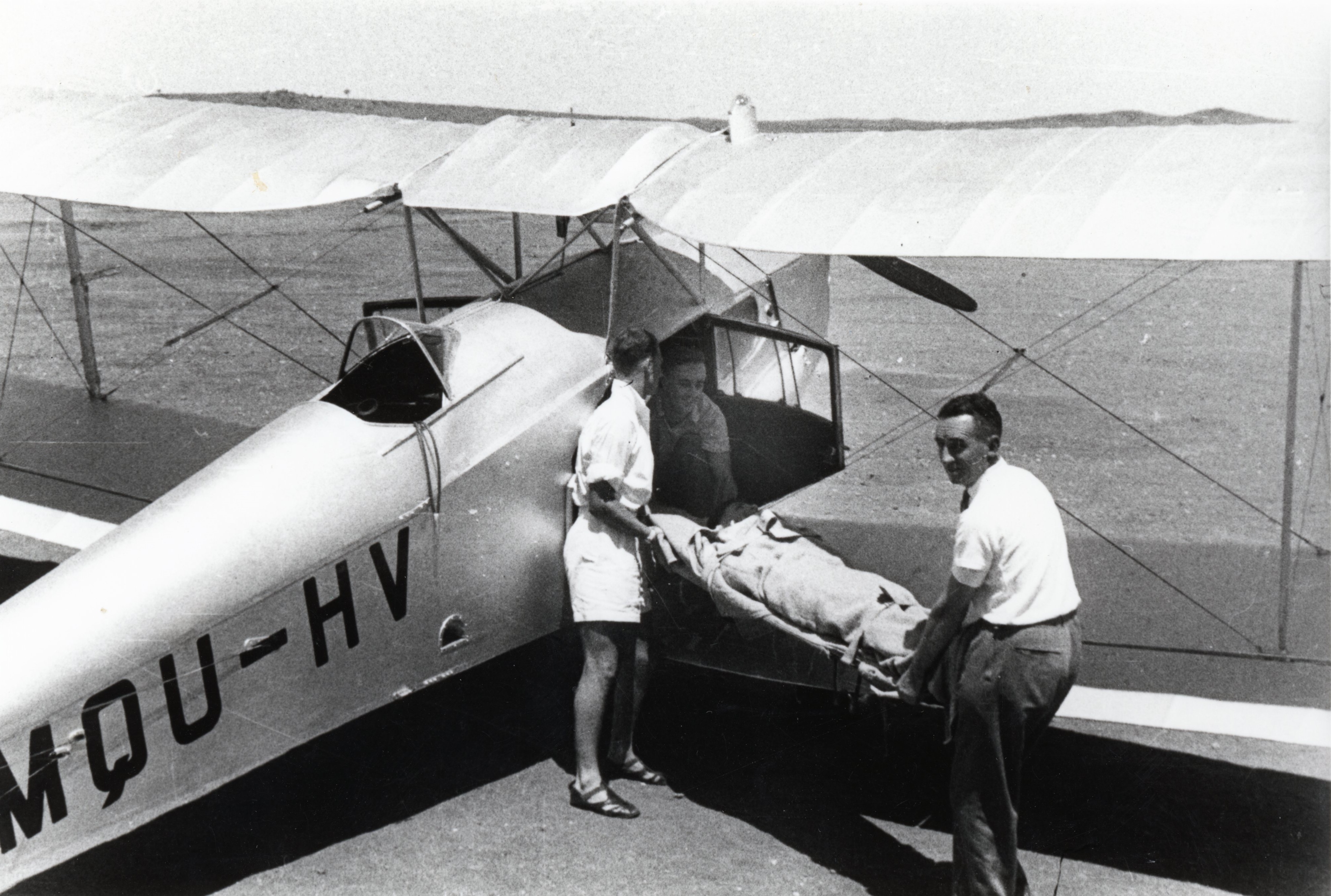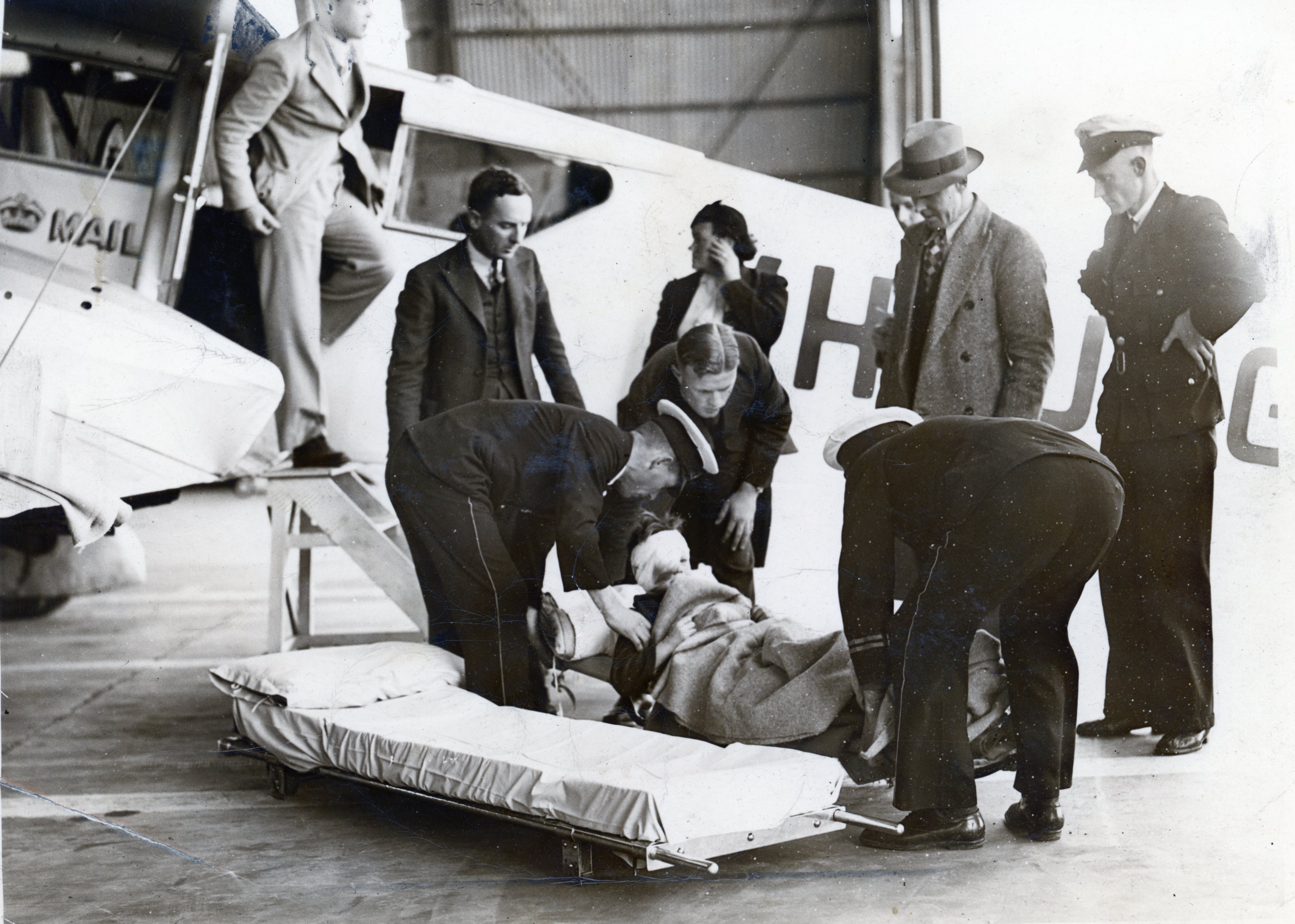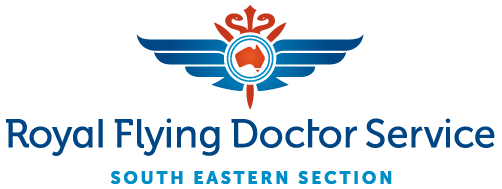
The Royal Flying Doctor Service History
Flying Doctor History
The ‘mantle of safety’ for Australia’s remote communities

Call for help for the Flying Doctor
The Flying Doctor takes flight
In 1927, a Presbyterian Pastor by the name of Reverend John Flynn founded The Flying Doctor. Flynn’s vision was to put a ‘mantle of safety’ around the people of Australia’s remote communities, after he witnessed their daily struggles first-hand.
The idea of using aviation to bring medical help to the outback came in a letter Flynn received in 1917. The letter’s author was Lieutenant Clifford Peel, an enthusiastic young medical student, airman and war hero. Peel was shot down in France at the age of just 24. Sadly, he never knew he provided the blueprint for what would become one of the world’s first aeromedical services.
The seed of Peel’s idea took root. It took Flynn 10 long years of tireless campaigning to turn his vision into reality. He held firm to the belief that ‘if you start something worthwhile, nothing can stop it.’
Meeting Alfred Traeger was instrumental in the establishment and early success of the Royal Flying Doctor Service of Australia. Traeger had an interest in radio for much of his life. During the 1920s, he was contacted by Rev John Flynn to assist in experiments which were to enable remote families access to medical treatment by using radio equipment. Traeger consequently developed the Pedal Radio which was a radio transmitter-receiver powered by a pedal-driven generator.
A bequest from long-time supporter, HV McKay, gave Flynn his opportunity to get a Flying Doctor Service airborne. After meeting Hudson Fysh, founder of a fledgling airline called QANTAS, Flynn signed an agreement to lease a bi-plane called ‘Victory’, and operate an aerial ambulance from Cloncurry, Queensland.
Up, up and away
Our original name was the Australian Aerial Medical Service. We’d soon change our name to The Flying Doctor Service of Australia. Our inaugural flight took off on the morning of 17 May 1928. An emergency call came in from the Julia Creek Bush Nursing Home, some 60 miles from Cloncurry. Pilot, Arthur Affleck, and Dr Kenyon St Vincent Welch took off in a single engine De Haviland 50 bi-plane. The two patients that Dr Welch operated on that day both survived. The legend of the Flying Doctor was born.



The History of the Flying Doctor South Eastern Section
1929
By 1928, the Flying Doctor Service had a doctor, a pilot and John Flynn, the man with the vision, but lacked the communication technology to deliver medical services efficiently. Engineer Alfred Traeger helped hurdle this barrier when he was commissioned by Flynn to develop a pedal-operated generator to power a radio receiver. By 1929 people living in isolation were able to call the Flying Doctor via pedal-powered radio to assist them in an emergency.
1930s
In the early 1930s, pilot Arthur Affleck was flying with the Aerial Medical Service. Affleck recalled that on one particular flight with Reverend John Flynn and Dr Bill Cornford to Kyuna, excessive heat in the cockpit had made him feel drowsy.
He was roused by the sound of an explosion on the aircraft and correctly suspected that one of the plane’s tyres had burst. Through a communication tube that ran from outside the cockpit to the cabin, Affleck prepared Flynn and Cornford for a crash landing. He wondered if they would make it and whether, if Flynn died, that would mean the end of the Flying Doctor experiment too. The landing was brutal but successful and Flynn complimented Affleck on saving their lives with his remarkable skill.
1936
On 6 May 1936, the New South Wales Section (now the South Eastern Section) was formed to bring faster medical assistance to the Broken Hill region. The Broken Hill base was established as its head quarter sin 1937. The de Havilland 83 Fox Moth was the first aircraft chartered by the Broken Hill base in June 1937.
Dr L.E. Odlum was the first flying doctor employed at the Broken Hill base. (Nurses were not employed for almost another decade). A Fox Moth aircraft, chartered from Australian National Airways, was piloted by Captain Annear for those first flights.
1939
In 1939, Dr Keith Sweetman, a flying doctor based at Wyndham in Western Australia, saw that telehealth was of limited value in the absence of pre-positioned medications for patients to access. He also realised that considerable radio time was being wasted by questioning patients on what was available in their first aid kits. Most people had haphazard collections of patient medicines. Sweetman suggested standardising the medical equipment held in remote locations so that people at those locations could self-administer treatment under the instruction of the doctor through radio consultations.
1942
In 1942, the Australian Aerial Medical Service changed its name to the Flying Doctor Service of Australia. In May 1950, founder John Flynn attended what was to be his last Flying Doctor Council meeting; sadly he died of cancer in May of the following year.
1945
Sister Myra Blanch was the first nursing sister to work for the Flying Doctor, moving from Sydney to Broken Hill in November 1945 to take up the role.
‘One of the chief problems,’ Blanch said, ‘is how to keep in touch with those families which are not on the pedal radio network. The only way is for the folk who are on the air to keep a watchful eye on those who are not. This service, of course, is always freely given by people of the outback for their neighbours.
1950
In 1950, Sister Lucy Garlick was stationed at Derby with the Flying Doctor Service. She was instrumental in the establishment of an infant health centre in East and West Kimberley, a service providing face-to-face advice and medical care to mothers and pregnant women.
At the time, Federal Senator Dorothy Tangney called the new service an inspiration to the women of the North-West who, she said, had gained a new confidence in taking young babies to isolated towns and stations as a result.
1951
Flying Doctor Service founder, John Flynn, died in 1951. His pioneering work was continued and further developed by his successor the Reverend Fred McKay, another Australian legend of the outback. Under Fred's leadership, the Flying Doctor Service became a very large organisation. Retiring in 1974,Fred continued Flynn’s keen interest in and advocacy for the Flying Doctor until his death in 2000.
1954
Operations began at the Flying Doctor Service Broken Hill base in May 1936. It was here during Queen Elizabeth II's 1954 visit that the Flying Doctor Service received the ‘Royal’ prefix.
1957
This envelope shows a ‘cachet’ or imprinted inscription celebrating the first day of issue of the Royal Flying Doctor Service stamp. The stamp, worth seven pence, was publicly released on 21 August 1957. The letter was addressed to Mrs John Flynn, the wife of the founder of the Flying Doctor, reflecting the address-writing convention of the time. Her signature, Jean B. Flynn, can be seen in the bottom left corner.

Historic emergency photo
1976
This year saw the introduction of regular clinic visits by specialist medical consultants. Today’s specialist visits include dermatologists, ear, nose and throat specialists, and ophthalmologists.
1986 - 1993
By 1996, the Royal Flying Doctor Service were such a strong symbol of Australian mateship, adventure and determination, that they became the subject of a highly successful TV drama, ‘The Flying Doctors’. Produced by Crawford Productions, the series ran for 221 episodes, across 8 years. It tells the ‘inside stories’ of the teams that brought life-saving ‘help on the horizon’ right across the Outback. The legend of our Flying Doctor spread around the world as the show continued screening to international audiences for years to come.
1999
The Royal Flying Doctor Service base at Dubbo was established in 1999 and offers a range health services including inter-hospital patient transfers, emergency retrievals, blood storage for transfusion patients, and an education program. Dental services also run from the Dubbo base, serving the remote communities of Collarenebri, Bourke, Lightning Ridge and Goodooga. In addition, flights for the Rural Aerial Health Service are coordinated from Dubbo. The Dubbo Support Group Inc., formed in 1993, campaigned for the establishment of the Dubbo base and continues to provide it with essential financial and volunteer support.
2000
In 2000 the section name changed to the South Eastern Section.
2012
Bob Browne had a history of heart problems, beginning in the early 1980s. He worked and lived most of his life with his family on a property in north Brewarrina. In 2012 he was flown from Dubbo to Sydney by the Royal Flying Doctor Service for life-saving open heart surgery. Bob felt such a connection to the Flying Doctor after the experience that he wanted to give something back. After his recovery, Bob volunteered countless hours to the service, including helping to deliver the Flying Doctor education program to school students in NSW. Bob is now part of the Non-Emergency Patient Transfer Service team, a role in which he drives and maintains Flying Doctor road vehicles, and also loads and unloads patients.
2017
The Royal Flying Doctor Service offers oral healthcare and clinics to outback communities, giving them vital access to high-quality care. These programs are run from the Broken Hill and Dubbo bases, including fly-in clinics that deliver essential dental services to adults and children in remote communities. In 2017, the Royal Flying Doctor Service expanded its Dubbo dental team via the launch of a mobile dental clinic.
2018
In February 2018, the Royal Flying Doctor Service South Eastern Section purchased four new Beechcraft King Air B350 Cargo Heavy Weight aircraft. Two of each aircraft are based in the Broken Hill and Dubbo bases. ‘These aircraft have been modified to a multi-role configuration, which means we can change from all-seating mode, more appropriate for patient transfer or transporting clinic staff , to air ambulance mode with full ‘mini-intensive care’ facilities in less than an hour,’ says David Charlton, South Eastern Section General Manager of Aviation and Strategic Development.
On the 17th May, the Flying Doctor celebrated our 90th year of bringing vital care to the communities of Outback Australia. To mark the occasion, and to remember the Flying Doctor of past decades, a squadron of 25 vintage aircraft set off from Dubbo on the 9th May to fly to Mount Isa in Queensland, arriving on the 17th May. The beautiful restoration of an original Flying Doctor 1934 Fox Moth had inspired the nine-day air pilgrimage in vintage planes. The second-last leg of the journey was from Cloncurry to Julia Creek. It followed the route of the first ever Flying Doctor flight - taken back on 17th of May, 1928.
On the 17th October, Prince Harry and Meghan visited the Flying Doctor base in Dubbo. They met our Flying Doctor teams and their families, volunteers and past patients - hearing first-hand stories of the vital work we’re doing across outback Australia. The royal couple then officially unveiled the latest addition to our flying fleet; a Beechcraft King Air B350 propeller plane.
2019
In 2019, the Royal Flying Doctor Service opened its redeveloped multifunctional aeromedical training and visitor experience centre in Dubbo.
‘The redevelopment allows the Flying Doctor to develop its aeromedical expertise and expand services so we can deliver more healthcare to more people,’ says Greg Sam, South Eastern Section Chief Executive. The new building incorporates administration, patient flow and telehealth units as well as a state-of-the art flight training centre for Beechcraft King Air aircraft. Prior to the redevelopment, many Flying Doctor staff had to train overseas.
‘Having world-class, state-of-the-art facilities within our existing Dubbo Base promotes medical excellence in healthcare delivery and supports community engagement. It also enables us to train our fixed-wing pilots and medical staff in this highly specialised branch of medicine quicker and more economically.’
Take home a piece of the Royal Flying Doctor Service
Visit our shop for Flying Doctor branded teddy bears, mugs, books, clothing, airplane model replicas and more.
“I have heard so much of the work of the Flying Doctor Service and the security and comfort it brings to every part of the outback. I express my admiration to all those, past and present, who have contributed to its splendid work.”



